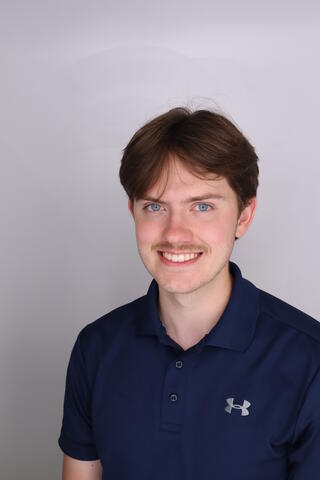Choose Ohio First Research Fellow Brady Phelps

Choose Ohio First Research Fellow Brady Phelps
Summary of current projects:
- Multithreaded Antenna Pattern Visualization for the Iterative Refinement of Antenna Pattern Visualization This project utilizes multithreading principles for the speedup and refinement of antenna pattern visualizations for the OUNPPM module. Work stands to benefit a variety of public, private, and military airports. Work presented at the Ohio Academy of Science, the Ohio State House, and will be presented in January at the national AIAA SciTech forum. Funded through the Choose Ohio First Fellowship.
- XR Visualization of OUNPPM. This project utilizes XR technologies to create a virtual environment for the Ohio University Navaid Performance Prediction Model as it pertains to navigational aids on Mars using the Mars rover image data. With the project at hand, we aim to create a VR interface for users to experience a new form of data visualization and an enhanced user experience. This project has implications that can be utilized to benefit missions relating to Mars and aligns with Airspace Operations and Safety goals by further improving the safety of current and future aircraft through conducting research pertaining to the navigational aid and performance of airport systems. This work is being funded by the Ohio Space Grant Consortium and will be presented at the NASA Glenn Research Center.
- Quantum-Enhanced ADS-B. This project takes proposals for encryption and key distribution schemes and adds a layer of quantum protection by introducing a quantum key distribution scheme for ADS-B key handoffs. The aim of this project is to protect aviation systems from snooping and future quantum threats by introducing new and unique ways to utilize quantum communication technology in avionics systems. Funded through the Choose Ohio First Fellowship.
- Quantum Simplified Trusted Node Security Proof and Network Simulations This project involves the construction of a security proof for simplified trusted node architecture in quantum networks, as well as creating a variety of simulations for the modeling of networks and key distributions within the networks. The simulations permit noise calculations, allowing the prototyping of potential quantum networks with access to anticipated noise levels. The work stands to benefit future quantum networks research and provide proof of security for the simplified trusted node architecture, which may lead to enhanced quantum networks. This work is funded by the NSF in collaboration with UCONN.
- Interests: Quantum Networks, Quantum Computing, Quantum Information, Virtual and Augmented Reality, Avionics, Space.
See also: Undergraduate

